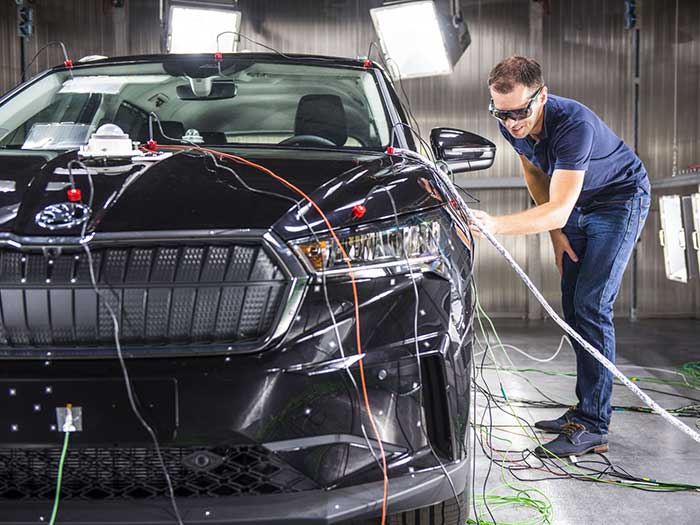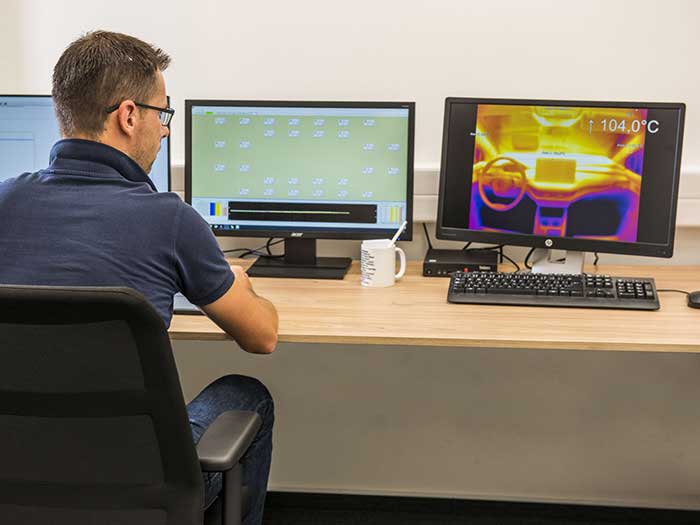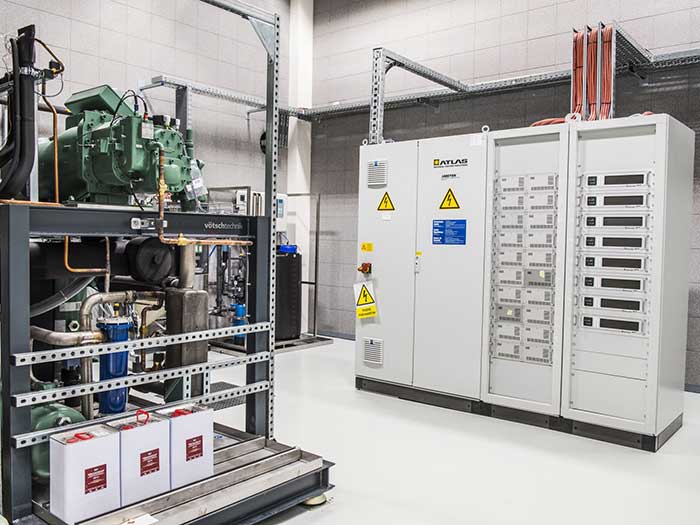From desert heat to alpine cold: the tests for ŠKODA electric cars
ŠKODA uses a solar chamber to put its electric models through their paces – the chamber can test out a range of scenarios and simulate four years of wear and tear in 25 days. Let’s find out how it works.
The daytime heat in a desert and a freezing Alpine night are two of the extreme environments used to develop the resilience of ŠKODA electric cars so that they perform in all conditions. ŠKODA is completely focused on quality – and that begins from the development stages, when it uses a special solar chamber to simulate, in just 25 days, what happens when an electric car spends four years in the conditions of a Central European climate. The test, and the data collected, reveal how a car’s individual parts and materials behave over the period and whether there is any degradation, including from a visual perspective.
“In Volkswagen Group it’s only Audi and ŠKODA that have an electric car test chamber. Audi’s solar chamber is in China, and ours is a bit more modern and has more safety systems,” explains Petr Sobotka, Head of Material Technology and Special Measurements.
The solar chamber

The solar chamber took just over a year to build. The room is completely isolated and fitted with a set of 28 metal-halide light emitters with an output of 2.5 or 4 kW. These special devices emit a light which best approximates the spectrum of real sunlight. However, the emitters only have a relatively short lifespan of three tests or so, after which they have to be replaced.
Next door to the solar chamber is a machine room with a special air-conditioning apparatus and software to control the power supply. This makes it possible to model various temperature, humidity and sunlight conditions.
Extreme conditions

“We can simulate a desert climate or a freezing night in the mountains. During a test, we switch between a hot Arizona day, with an air temperature of 42°C in the shade and a sunlight intensity of up to 1.000 W/m2, a Florida-style climate with extreme humidity, and a cold Alpine night when the mercury drops to -10°C,” says Dalibor Kopáč, test coordinator in the solar chamber.
The entire process is managed from the control room, which is separated from the chamber by a thick wall. Personnel will soon also be able to supervise tests using their mobile phones.
Safety first

Given that some parts of the car can reach temperatures of 110°C during tests, safety cannot be taken lightly. That’s why the room is full of sensors that monitor temperature.
Thermo-cameras outside the chamber monitor cars that technicians are preparing for testing, and those that have just completed one. The chamber itself is equipped with a safety system that stops a test if there is any hint of a problem.
The test procedure
The first fifteen days of the test simulate the hot, dry climate of the Arizona desert. Every 24 hours there are two one-day cycles when the car is exposed to intensive sunlight of up to 1.000 W/m2, an ambient temperature of 42°C and humidity below 30 per cent, and two cycles simulating night-time conditions with a temperature of 10°C. At the end of every day there is a one-hour servicing period at a temperature of 23°C, when technicians can enter the chamber to check the condition of the vehicle, the lights and the sensors.
The last ten days of the test simulate a humid Florida-style climate. During the daytime cycle the temperature is cranked back up to 42°C, but this time the relative humidity climbs above 60 per cent. From this temperature the chamber is cooled to the conditions of an Alpine night at minus 10°C.
Source: ŠKODA
